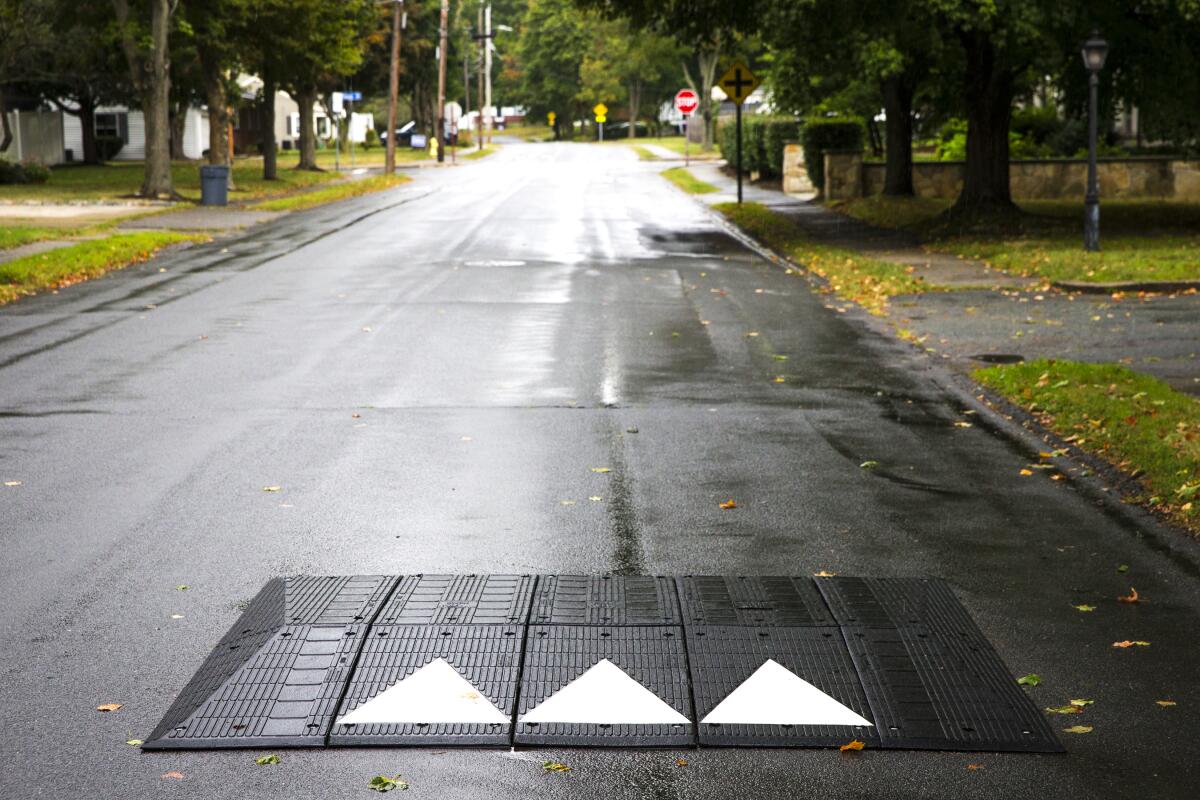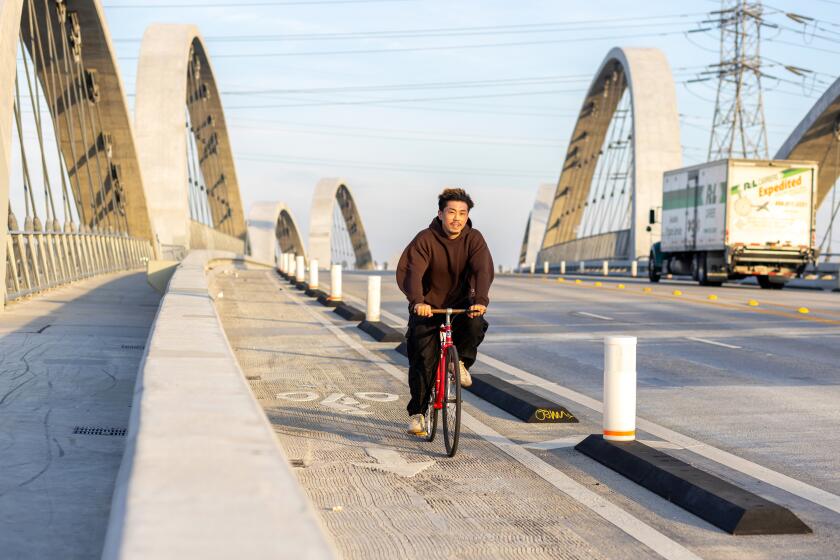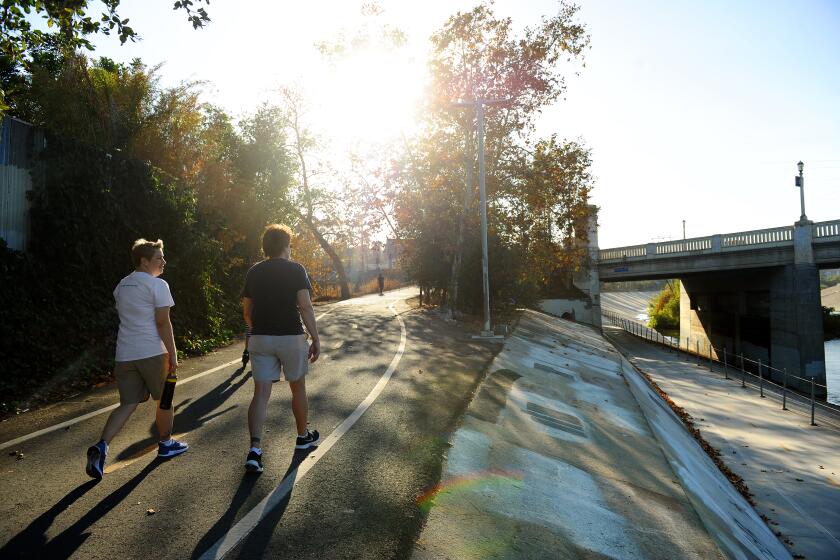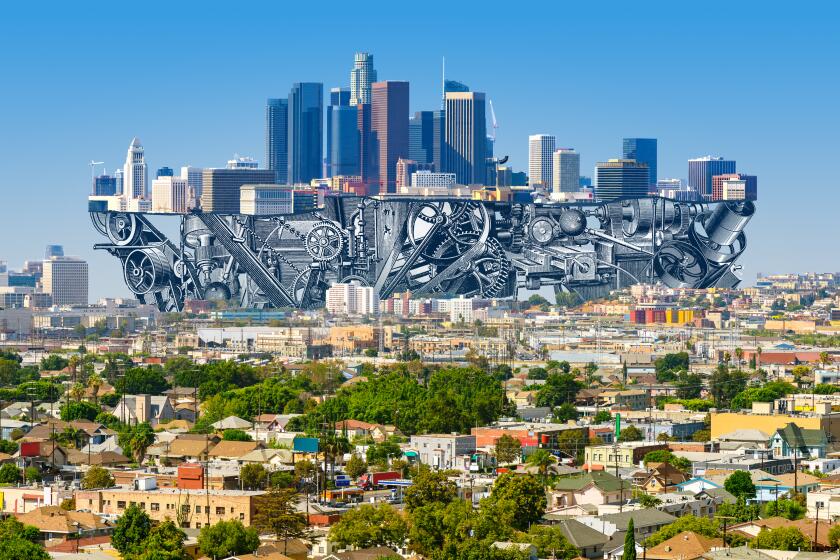Editorial: Why does it have to be so hard to get a speed hump in Los Angeles?

What’s the most exclusive, hard-to-get reservation in Los Angeles? No, we’re not talking about scoring dinner at n/naka, Funke or another of the city’s hottest restaurants, or even a tee time at the city’s very in-demand municipal golf courses. We’re referring to the mad rush that happens roughly once a year when the city opens the application window for speed humps.
This rare event allows residents to submit a request for an asphalt bump on their block to slow speeding drivers and discourage cut-through traffic. The last time the window opened in October 2022, the application limit of 375 was hit and requests were cut off less than 10 minutes after the online portal opened. The Los Angeles Department of Transportation accepted 25 applications from each of the 15 council districts. Just 96 streets, six per district, were funded. The construction of the new humps should be completed next month.
Los Angeles leaders sat on the city’s ambitious Mobility Plan for years, fearing political pushback to bike, bus and pedestrian improvements. But the overwhelming support for Measure HLA demonstrates widespread support for safer streets.
The window opens again this week, at 9 a.m. Thursday. Once again, the city is encouraging residents to be ready the minute the application period begins. Any bets on how long it will take for the window to close?
The better question is why Los Angeles treats a request for an important piece of street safety infrastructure like a ticket to a Taylor Swift concert. Residents shouldn’t have to scramble to queue up once a year just to try and make their neighborhoods safer for people to walk, bike and drive.
Our city has become the most dangerous in America in which to walk. Part of the solution is a measure on the ballot this March.
There ought be a more efficient, equitable way to decide where speed humps should go. The current application system favors neighborhoods where residents are savvy about city services and individuals have the ability to file an online application at 9 a.m. sharp on a weekday. To be more inclusive, the department could lengthen the application window so more residents would have the opportunity to submit requests and use a lottery to pick the streets that “win” speed humps.
Applicants this year are also required to have the backing of at least two-thirds of the affected residents on the street to get approval for speed humps, which again favors individuals who have the time and resources to rally support in their neighborhood.
Wouldn’t it make more sense for the city to use the $2 million it budgets each year for the residential speed hump program to proactively target streets that have problems with speeding and cut-through traffic, or are heavily used by pedestrians and bicyclists? Speed humps can also be installed with grant funding, as part of a development project or with the help of a council office. Last year the City Council voted to install speed humps around 50 high-priority schools after a mother was killed while walking her daughter to an elementary school in Hancock Park.
Some proposals to improve the dysfunctional city government: Abolish the City Council, elect a public advocate, appoint a homelessness czar, make it possible for the unwealthy to run for office.
There’s clearly demand for traffic calming measures, and for good reason. Last year, 336 people were killed in vehicle crashes, more than in any of the last 20 years. Los Angeles had more traffic fatalities than homicides in 2023.
This month, voters overwhelmingly passed Measure HLA, which will require that the city redesign select streets to make them safer and easier for people to walk, bike and take transit, as outlined in the Mobility Plan 2035. The plan calls for projects to provide a calm and safe environment for walking and biking on some 800 miles of local streets. Some those projects could include speed humps.
There is an epidemic of speeding, reckless and distracted driving in Los Angeles, and residents are clamoring for safer streets. The city’s job is to figure out how to get improvements on the ground as quickly and fairly as possible. An online application system that opens once a year for a few minutes at a time is not an efficient or equitable way to do that.
More to Read
A cure for the common opinion
Get thought-provoking perspectives with our weekly newsletter.
You may occasionally receive promotional content from the Los Angeles Times.













